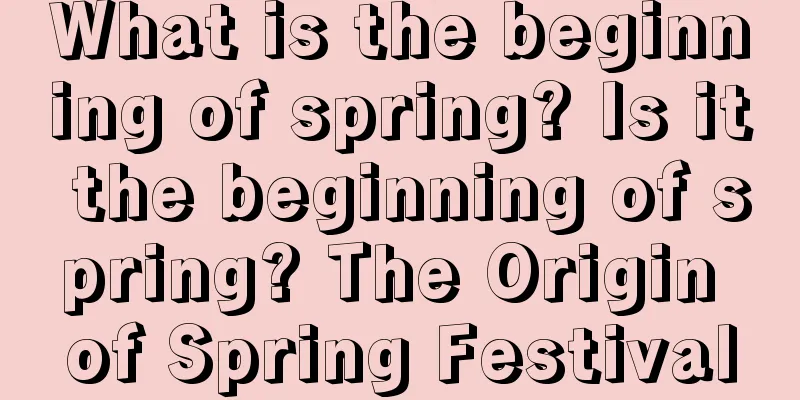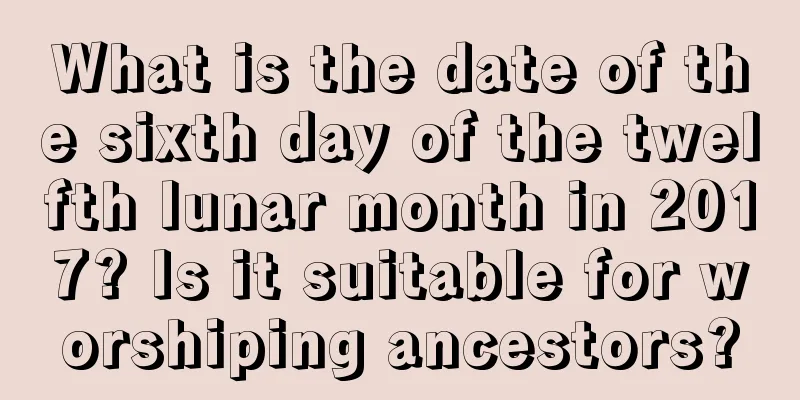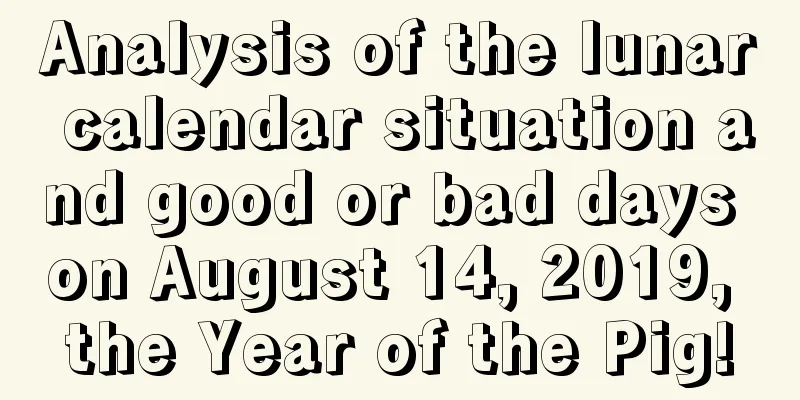What is the beginning of spring? Is it the beginning of spring? The Origin of Spring Festival

Introduction: Friends, have you ever heard of the term "Dachun"? I believe many people will be confused like me. So what does Dachun mean? Is Dachun the first of the 24 solar terms? Don’t be in a hurry, follow me to explore it in depth. New year, new atmosphere, there are countless topics about the Spring Festival. If you want to know more about the Lunar New Year, please continue to pay attention to Mr. Shui Mo’s exclusive Spring Festival special articles for you!1. The meaning of Dachun1. Beginning of Spring (In the old days, county officials would welcome a spring ox made of clay one day before the beginning of spring and place it in front of the government office. On the day of the beginning of spring, they would whip it with red and green whips, hence the beginning of spring is commonly known as "dachun").2. An old custom, referring to the custom of whipping a clay ox with a whip on the day of the beginning of spring to pray for a good harvest, or beating small gongs, bamboo boards, etc., singing lyrics, and asking for money from door to door. 2. The Origin of DachunThe custom of Beginning of Spring originated from the imperial palace. According to legend, the day of Beginning of Spring was treated as a festival by everyone inside and outside the palace and was celebrated with extra grandeur. The earliest saying was that the clay spring ox erected in front of the imperial palace would be smashed on the day of the Beginning of Spring. Historical records record that "Duke Zhou was the first to make the clay ox for the Beginning of Spring." If that's the case, then the year is almost as old as our Chinese nation. The book "Kyoto Customs" once recorded: in front of the palace, "a Mang God is set up in the east and a Spring Ox is set up in the west." After the ceremony, "the servants beat and burned it, so it was called 'beating the spring'." At that time, smashing the Spring Ox had the meaning of "urging the ox to plow the fields" by whipping the old ox. People rushed to take the pieces of the Spring Ox home and regarded them as a symbol of good luck.The Mang God mentioned here is the God of Spring, who dominates the farming affairs of the year. This is recorded in "The Book of Rites" and "Zuo Zhuan". On the day of the beginning of spring, paintings of spring oxen are usually sold in temple fairs in old Beijing. The man leading the ox in the front is the Mang God. Most families, even if they have already entered the city, will bring the Spring Ox picture home. The meaning of this picture is the same as the fragments of the Spring Ox they bring home. They pray to themselves, and the God of Spring and the Spring Ox are both blessings for a year's harvest. The cow is painted with colors, firecrackers are set off, and it is dressed up as the Spring Official. It runs in front of the road to welcome the Mang God and beat the Spring Ox. This ritual has a very long history. Moreover, at the beginning, it was the emperor who personally took charge of all of this and personally welcomed the God of Mang and the Spring Ox in the palace. At first, the emperor had to pretend to be holding the plow himself and cutting the ribbon, just as a symbolic gesture. The Song Dynasty book "Dongjing Menghualu" once recorded: Mangshen and Chunniu "entered from the middle gate of Wumen, and went respectfully to Qianqing Gate and Cining Gate. The eunuchs each responded and everyone withdrew after the ceremony." It can be said that the etiquette was very grand. This tradition has undergone some changes later on, with the Mangshen and the Spring Ox being placed in the suburbs instead of in front of the palace. This change has been recorded in the writings of the Ming Dynasty. However, in the capital, all ceremonies were still organized by Shuntian Prefecture on behalf of the palace, with the idea of celebrating for all the people and bringing joy to the country. The "Brief Introduction of Imperial Capital Scenery" printed during the Chongzhen period of the Ming Dynasty has a special record of the Spring Market: "Five miles outside Dongzhimen is the Spring Market, with the Spring Pavilion in the market. It was built by the prefectural government Yi Xiejie in the year of Guisi in the Wanli reign. According to the tradition, one day before spring, the Great Jingzhao welcomes spring, with flags leading the way, followed by Tianjiale, then Goumang Shenting, then Chunniutai, then the county magistrate, the elders, and the Confucian scholars of the capital. The government servants from top to bottom of the government all ride horses, and the chancellor and the governor ride on carriages. The officials all wear red clothes and hairpins with flowers to welcome spring, and enter the government from the market. On that day, a small Niu Mang god is made, and Jingzhao carries it into the court, presenting the emperor Chun, the empress Chun, and the prince Chun. After that, all officials congratulate in court dress. At the beginning of spring, officials of the prefecture and county wear official clothes, pay homage to Goumang, and each whips the ox three times with a colorful stick to encourage farming." This custom continued until the Qing Dynasty. Pan Rongsheng of the Qing Dynasty recorded in "Annals of the Capital's Sui Shi Sheng": "On the day of the beginning of spring, the magistrate of Wanping County in Daxing set up a case in the middle outside the Meridian Gate. The students of the prefecture and county carried it in, led by an official from the Ministry of Rites, followed by the Shangshu, Shilang, Fuzhan and Chengpin, and they entered through the middle gate of the Meridian Gate." That grand scene has not changed at all. But the "beating spring" at that time was different from the earliest scene of "many people rushing to burn" and picking up the pieces of the spring ox and scattering back home like birds and beasts to seek good luck. The ceremony was even more complicated. A winding procession, led by Fu Yi, carried the Spring Ox from the Meridian Gate into the palace. All officials, wearing court robes, whipped the ox with colorful sticks, pushing the scene to an even more spectacular climax. After whipping the Spring Ox, the officials could receive "colorful sticks" as gifts from the emperor when they left the court. Those officials were overjoyed, just like the farmers in the past who took the pieces of the Spring Ox home, and prayed for a year of good weather and good harvests. The meaning of their prayers and blessings was an inheritance and continuation of those of their predecessors. Summary: Through the above article content, we know that Dachun is the ancient term for the beginning of spring, and it is also an old custom in ancient times. At the same time, through the above article we also know the origin of Dachun. I hope you will like the above article. I wish you all good luck and happiness in the new year! After reading this article, there are more exciting content in the Spring Festival special topic, let’s take a look! |
Recommend
Is July 16, the day of the Beginning of Autumn in 2021, suitable for moving? Is it a good day to move into a new house?
In early July, fruits and vegetables are ripe and ...
Can I sign a contract on April 22, 2021 in the lunar calendar? Is this day a good date?
Green locust trees and tall willows are swallowing...
Is it a good day to move the grave on the 15th day of the twelfth lunar month in 2020? Check the luck and bad luck on January 27, 2021
Introduction: It is also necessary to choose an au...
Is the fate of a girl born on the eighth day of the ninth lunar month in 2018 good?
Everyone has his or her own corresponding birth mo...
Analysis of the 20th day of October in the lunar calendar 2021. Is this day an auspicious day?
The quality of a day is different every day, so le...
Where is the direction of the God of Happiness on the seventh day of the fifth lunar month in 2018?
The fifth month of the lunar calendar is also kno...
Is June 19th of the lunar calendar in 2021 suitable for caesarean section? What is your baby's personality like?
The sixth month of the lunar calendar belongs to t...
Analysis of the 14th day of the 12th lunar month in 2021. Is it a good time to pick up the car on that day?
The time to pick up the car is different and the q...
Is it a good idea to get married during the Cold Dew season in 2018? Eight things to do before getting married
From an official perspective, marriage refers to a...
Is it a good date to check the lunar calendar for the third day of the seventh lunar month in 2020?
Is it a good date to check the lunar calendar for...
What are the taboos on the fourth day of the fifth lunar month in 2018?
According to the 24 solar terms, the fifth month ...
Is it not allowed to have a haircut on December 23rd of the lunar calendar in 2017?
Introduction: The arrival of the twelfth lunar mon...
Is the first day of the seventh lunar month in 2020 a suitable day for travel?
Is the first day of the seventh lunar month in 202...
Is April 28th, 2020 a leap day? Can companies and shops open for business?
The 28th day of the fourth lunar month in 2020 is...
What is the zodiac sign of a child born on the seventh day of the sixth lunar month in 2021? Cancer?
The sixth lunar month is one of the months in the ...









